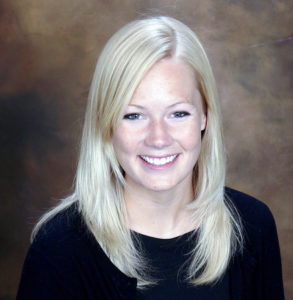 Note: Media members interested in interviewing Jaclyn Stephens can email mark.gokavi@colostate.edu.
Note: Media members interested in interviewing Jaclyn Stephens can email mark.gokavi@colostate.edu.
In the news
Miami Dolphins quarterback Tua Tagovailoa again entered concussion protocol one day after the team’s Dec. 25 loss to the Green Bay Packers. Tagovailoa was also was injured in the second and third weeks of the NFL season, prompting a reevaluation of the league’s concussion protocol. After a joint investigation, the NFL and players union agreed to change the protocol to include “ataxia,” defined as the loss of full control of bodily movements.
CSU’s expert
Jaclyn Stephens is an assistant professor of occupational therapy in CSU’s College of Health and Human Sciences. In the Sport Concussion & Occupational Rehabilitation (SCORE) Lab, Stephens researches sports-related concussion and traumatic brain injury using behavioral measures and neuroimaging techniques. Stephens said she hopes to find the neuromechanism that is behind subtle deficits to target them with evaluation and treatment protocols.
The podcast episode
Stephens was a guest on the Oct. 21 episode of Health and Human Science Matters, a podcast co-hosted by Avery Martin, digital media strategist, and Matt Hickey, associate dean for research and graduate studies.
The expert’s voice
(regarding Tagovailoa’s Sept. 28 head injury)
“He was in a fencing posture; so that is indicative of brain injury after a concussion. So you see some of these reflexes that are supposed to have to have integrated when you’re a baby. These reflexes integrate as part of normal development and brain injury can actually cause a reemergence of reflexes. So, we’ll see some of these infantile reflexes with people with severe brain injury. But that image that we saw of (Tagovailoa) doing that strange posturing with his hands, that’s actually indicative of a reflex reemerging. That shows that he’s had brain injury.”
(regarding studying return to play)
“I am an athlete and I love sports. I watch football. I’m not anti any of the sports that people play that get head injuries. And so, I think there’s sometimes this misconception that those of us who study concussion are like, ‘We should cancel football!” I don’t want to cancel football. What am I going to do on Sundays? I think we just really need to be careful and mindful about how we manage return to play and how we measure these things.
“These subtle deficits, while they’re not obvious to an everyday person walking by the athlete that sees, ‘Oh, their reaction time is a little slow,’ those are the kinds of that make the difference between dodging the opponent and being hit by the opponent. That kind of speed and processing time is so essential. So even very subtle deficits, I think, are potentially causing this higher rate of re-injury when people have concussion.”
(regarding concussion assessment protocols)
“The reason that I study athletes at the point of return to play is because we know that athletes — even when they’re cleared to return to play, using the best protocols, when you have the best athletic trainers and physicians, and everybody is well intentioned — even in those cases, athletes can still get re-injured. That tells me that there’s nothing wrong with the people assessing, it says that there’s something with our assessment measurements and that they’re just not quite sensitive enough. If these athletes look normal or neurotypical, that could be really bad, because they’re not normal or neurotypical. They have reaction times that are standard deviations faster than average people.”